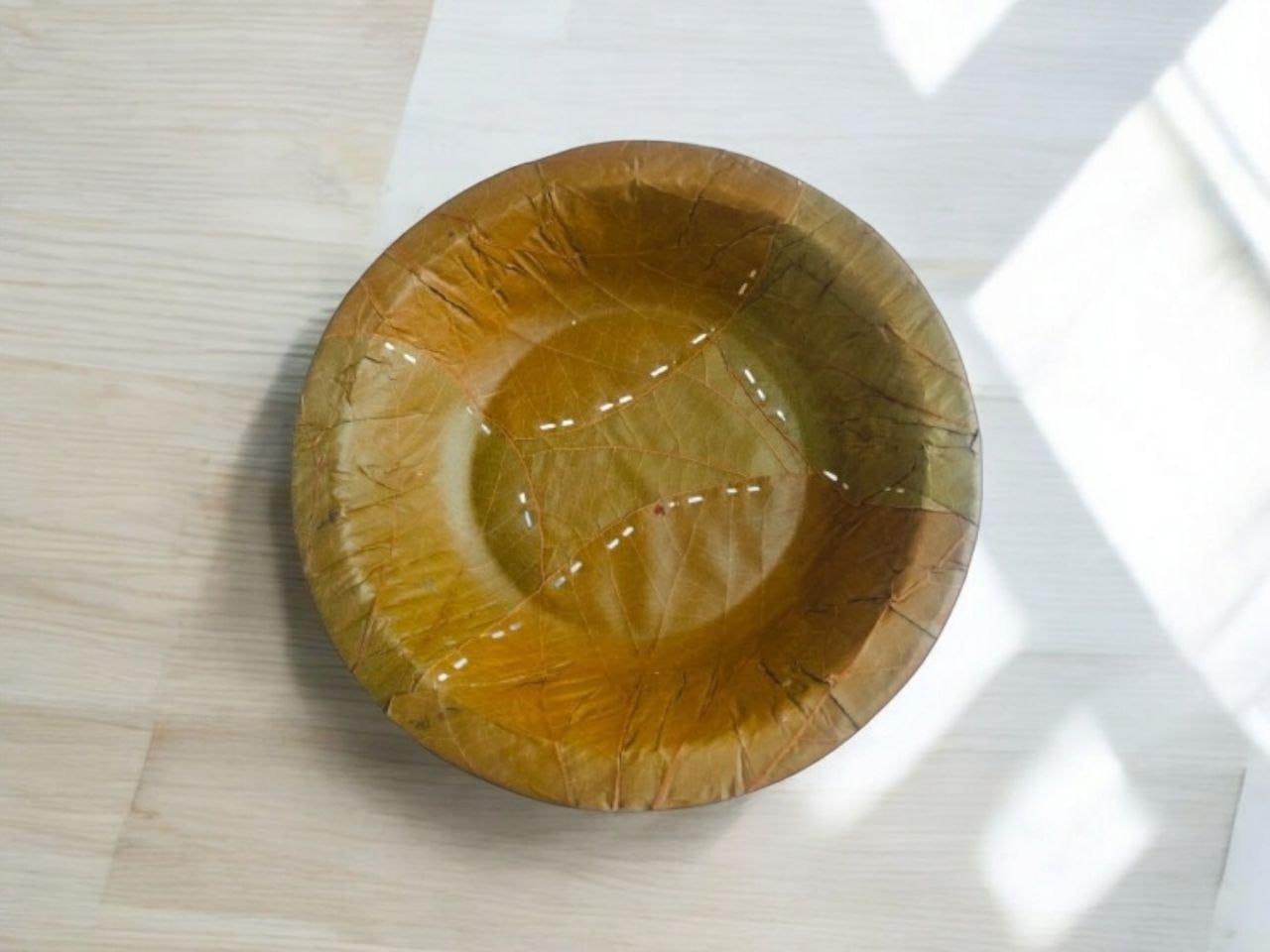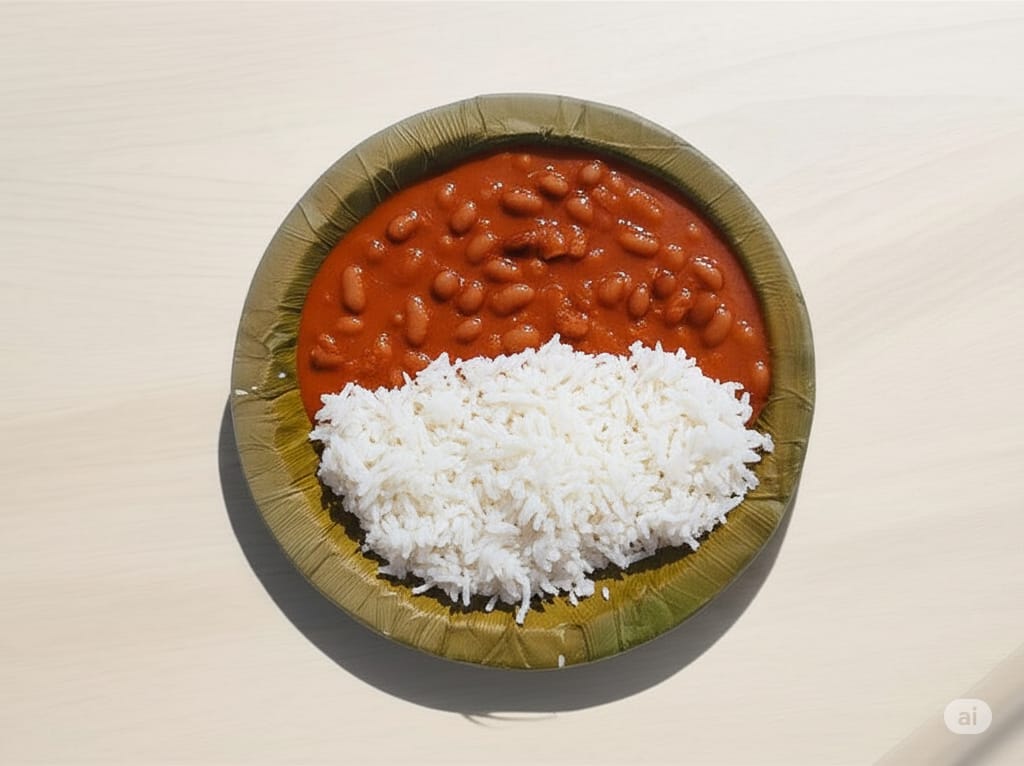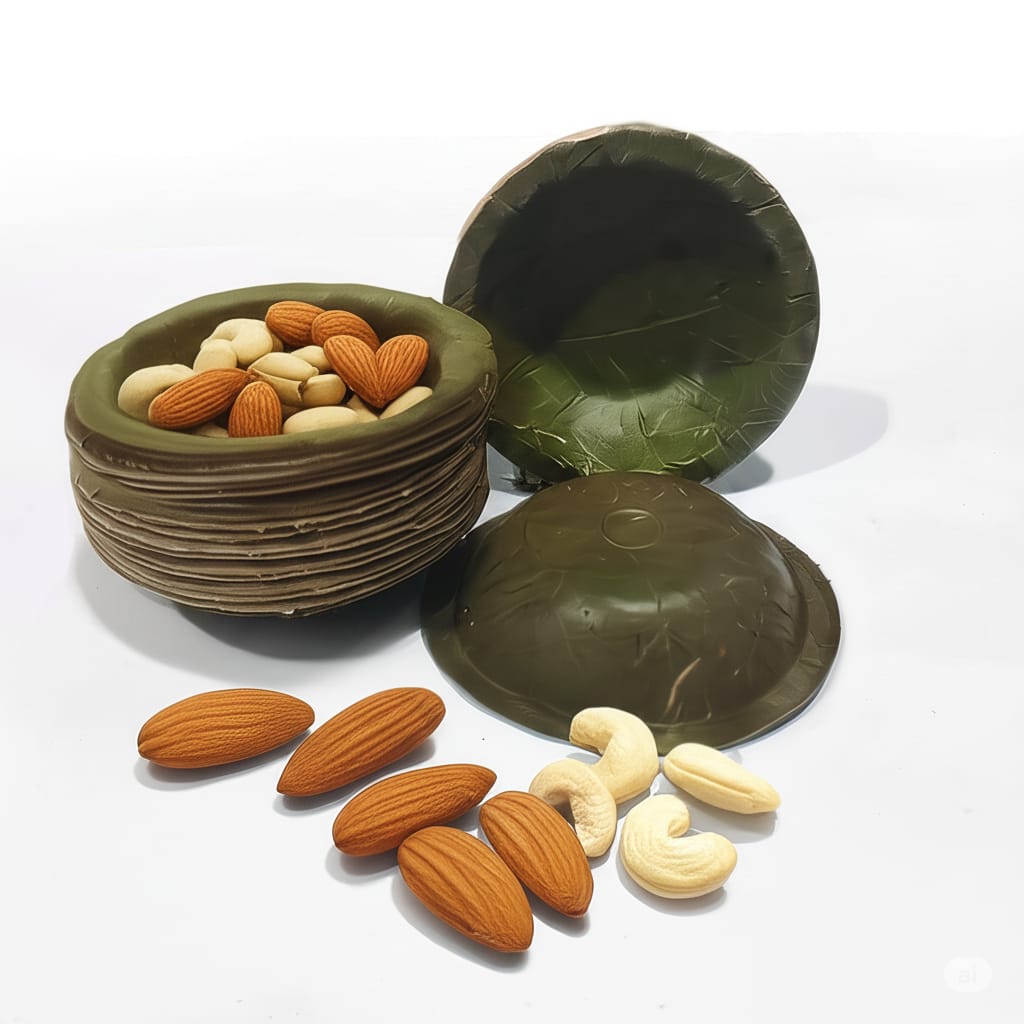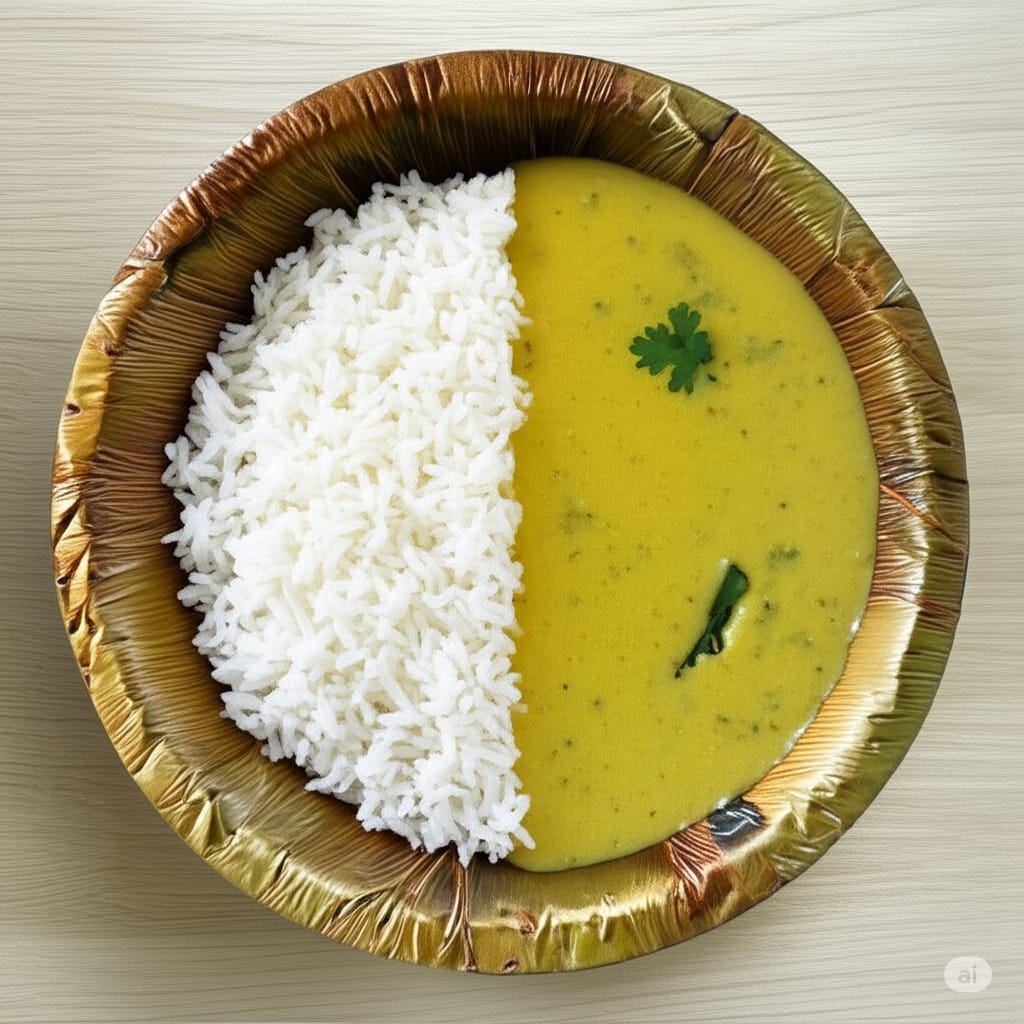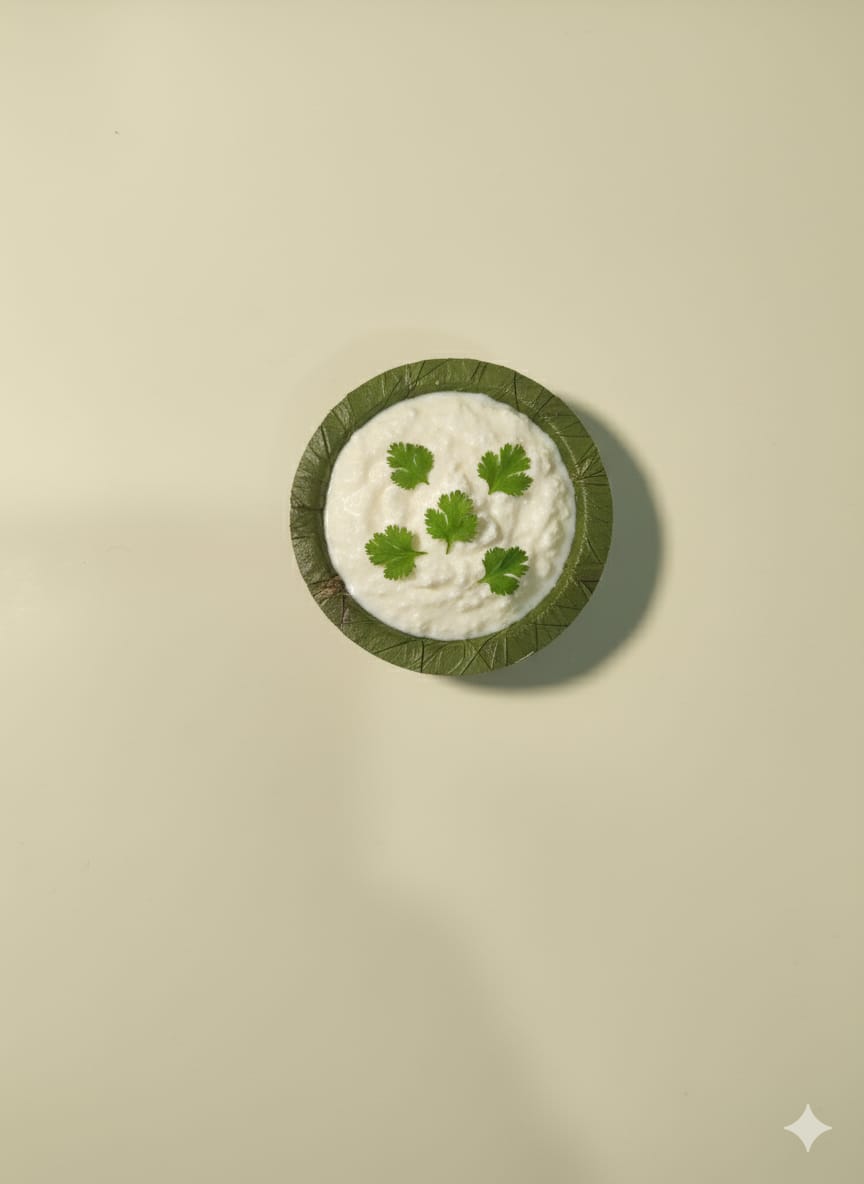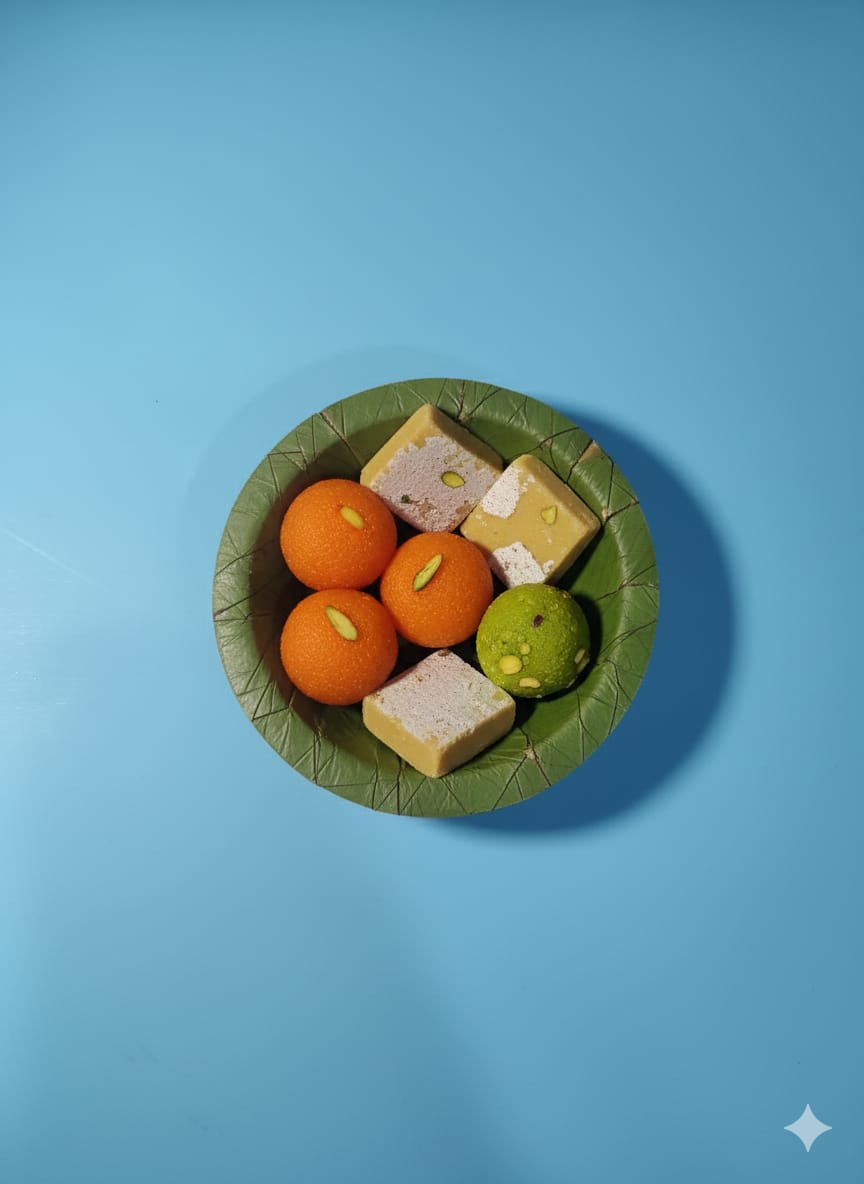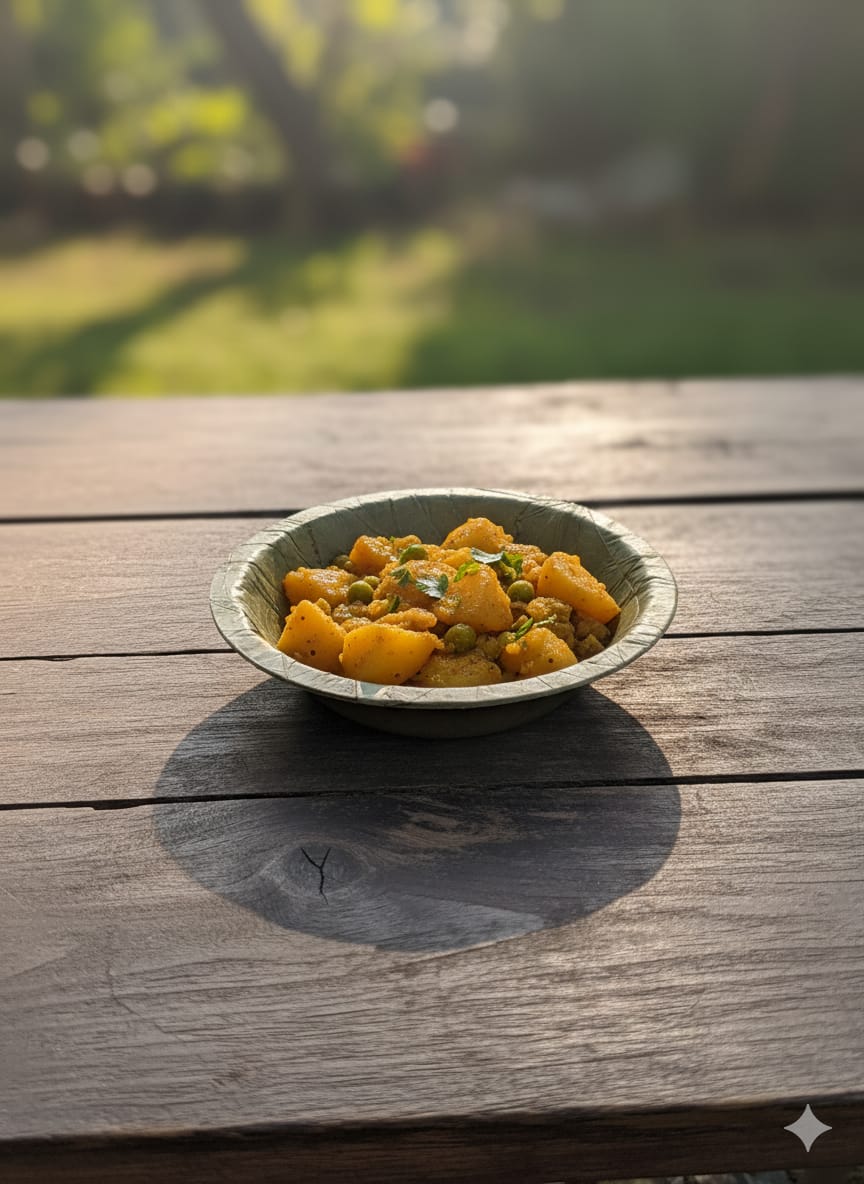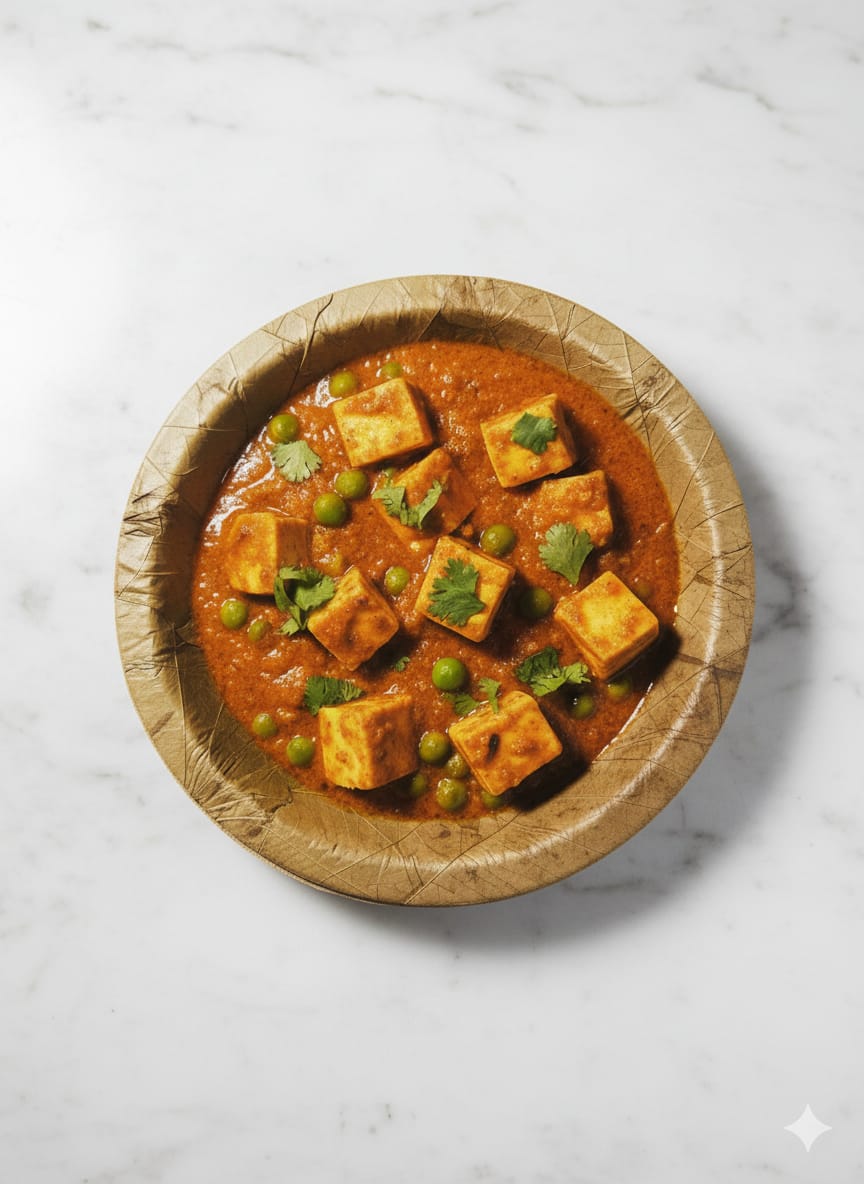Blogs

The Science Behind Biodegradable Tableware
Have you ever dropped a leaf on the ground and noticed how, after a few days, it starts turning into... well, mush? That’s not magic—it’s science. And that same natural magic is what makes your leaf plate decompose faster than a guilt trip after eating too much dessert. Leaf plates are made from naturally fallen or carefully harvested leaves—most commonly sal, banana, or palm leaves. These leaves have what scientists call “lignocellulose,” a complex structure of fibers that break down quickly with the help of moisture, oxygen, and microbes. Unlike plastic, which basically sits in the soil for a few centuries like a stubborn house guest, these leafy wonders start to return to nature in as little as 30 to 60 days. What’s amazing is that you don’t need a fancy composting machine or a PhD in waste management. Even tossing it into your garden compost bin works. Nature takes the wheel and drives it straight to decomposition town. If bacteria had a five-star dining app, leaf plates would be trending at the top. When you toss a used leaf plate, billions of tiny bacteria and fungi move in and throw the ultimate dinner party. They love nibbling on those organic fibers, breaking them down bit by bit until all that’s left is nutrient-rich compost. You might not see these tiny diners with your eyes, but they’re working harder than the busiest chefs. These helpful microbes don’t show up for synthetic plastics, which is why plastic takes hundreds of years to degrade—and even then, it turns into harmful microplastics. The reason microbes are so enthusiastic about leaf plates is that they’re 100% organic. No chemicals, no dyes, and nothing synthetic to scare them away. It’s like rolling out the red carpet for the good guys of decomposition. Some people wonder, “If it’s just a leaf, how does it hold my curry without turning into soup?” Great question. Many leaf plates come from leaves like sal or areca that naturally repel water thanks to their waxy surface. That’s right—no plastic lining, no chemical coating—just nature doing its thing. This matters because most disposable paper plates are lined with a thin layer of plastic to make them waterproof, which messes with composting. The coating doesn't break down and often contaminates recycling systems. Leaf plates, on the other hand, say, “I got this,” and handle your food with flair while staying friendly to the planet. When you throw them away, they don’t leave behind any hidden synthetic residue. They go out clean, the way they came in. Their lack of chemical processing is a big reason they break down much faster than even “eco” alternatives like PLA or bamboo fiber plates. You don’t need a high-tech industrial composter to see results. Just a little sunlight, some air, and your garden soil are enough to get the party started. Within a few weeks, the plate becomes unrecognizable. Within two months, it’s fully gone—absorbed into the earth like it was never there. This fast breakdown is especially helpful in countries where formal waste collection systems may not be top-notch. Leaf plates don’t wait for someone to carry them to a landfill—they just melt back into nature wherever they are. That’s efficiency at its greenest. So if you’re someone who enjoys guilt-free snacking and hates trash that sticks around, leaf plates are the MVPs of eco-dining. Your food disappears into your belly, and your plate follows soon after—no trace left behind. To sum it up: leaf plates decompose quickly because they’re built for it. Their natural fiber structure invites friendly microbes, their chemical-free makeup avoids waste complications, and their water-resistant surfaces handle food like pros without needing synthetic help. You don’t need to be an environmental scientist to understand why this matters. With leaf plates, you can enjoy your meal, toss the plate, and walk away knowing nature’s got the cleanup covered. And isn’t that what we all want? Less mess, less plastic, and more reasons to eat under the stars with a plate that came from a tree and will happily go right back to it. Comparing Leaf Plates to Plastic and Paper: Why Nature Wins Every Time Let’s face it—your plate says more about you than you think. Are you team plastic, paper, or proudly leaf? When you serve food, you're also serving your values. In this fun and easy-to-read post, we’re diving into the ultimate showdown: Leaf Plates vs. Plastic vs. Paper. Spoiler alert: nature's got a leafy little trick up its sleeve. Leaf plates are like Mother Nature’s version of fine dining. Made from naturally fallen leaves, they’re shaped, cleaned, and pressed—no chemicals, no nonsense. When you eat off a leaf plate, you’re literally dining on something that once soaked up the sun and danced in the wind. They’re strong, surprisingly sturdy, and don’t give up on your food mid-meal like some paper plates do. Plus, they don’t melt or warp with hot food like plastic ones. So yes, you can enjoy your hot samosas or spicy curry without worrying about a soggy disaster. And here’s the best part—they decompose naturally in just weeks. No need to throw them into landfills or worry about harming sea turtles. You can toss them in your compost or even bury them in your backyard. Boom—gone and forgotten, just like your leftovers. Plastic plates may seem convenient at first, but they come with a heavy price—one that nature can’t afford. Every time you pick a plastic plate, you're picking a product that sticks around for hundreds of years. Yes, hundreds. That one burger plate could outlive you, your dog, and probably your grandkids. Plastic doesn’t decompose. It just breaks into tiny pieces that pollute soil, oceans, and even our food. Worse, when burned or improperly disposed of, plastic releases toxic fumes that harm the air we breathe. And let’s be real—how many times have you used a plastic plate and watched it bend under the weight of food like it’s doing yoga? Sure, they’re cheap and easy to buy in bulk, but they’re not worth the environmental mess they leave behind. You can do better, and your planet deserves better too. Paper plates often seem like the “greener” choice, but things get murky when you look closely. While they’re made from trees and can break down faster than plastic, the process of making paper plates still involves cutting down forests, using water, and adding chemicals for that crisp white finish. And don’t even start on the coated paper plates—the ones with a waxy or plastic-like layer to make them leak-proof. Those are tricky to recycle and barely compostable. So you end up with a plate that acts like plastic but pretends to be eco-friendly. Sneaky, right? Also, paper plates tear more easily when wet, which means double stacking or accidental spills. Not very elegant for your next party—or for that hot dal chawal. Leaf plates are not just biodegradable—they’re beautiful. They bring a rustic, earthy charm that paper and plastic can’t replicate. Imagine your next event: banana-leaf cutlery, clay cups, and leaf plates serving local delicacies. It’s not just a meal; it’s an experience. They’re also safe for food—no harmful chemicals, coatings, or dyes. You get the taste of your food, not plastic additives or paper aftertaste. Plus, they support rural artisans and communities who collect and press these leaves as part of their livelihood. When you choose leaf plates, you're not only reducing waste—you’re also encouraging traditional skills and supporting a circular, sustainable economy. In the grand battle of single-use plates, leaf plates are the clear winner. They're strong, stylish, compostable, and guilt-free. Plastic and paper just can’t compete on every level—eco-friendliness, durability, and even aesthetics. So next time you’re hosting a get-together, organizing an event, or planning a picnic, ditch the synthetic stuff. Go green with leafy goodness. Trust us—your guests will notice, the Earth will thank you, and you’ll feel great doing it. Ever wondered why leaves don’t turn into soggy messes every time it rains? You’d think with all that water pouring down from the sky, the leaves on trees would just soak it all in and collapse like a drenched tissue. But nature, being the genius it is, has its own waterproofing tricks. And believe it or not, these tricks are not only fascinating—they’re inspiring new technologies around the world. Let’s take a stroll through the leafy wonders of nature and discover how leaves manage to stay leak-proof, no umbrellas needed. If you take a leaf and pour water on it, you’ll notice the water beads up and rolls right off. That’s no accident—it’s thanks to a special waxy layer called the cuticle, which acts like nature’s raincoat for leaves. This thin but mighty coating helps prevent water from soaking through the surface. You can imagine it like a built-in Teflon layer, but 100% natural and environmentally friendly. This waxy cuticle is made mostly of cutin, a fatty substance that plants produce themselves. Pretty smart, right? You don’t have to sew a jacket for every leaf if you can grow one from within! Leaves use this coating to stay dry, which helps them do their main job: photosynthesis. If water covered their surface all the time, sunlight couldn’t reach the tiny openings (called stomata) that leaves use to breathe and absorb carbon dioxide. So, staying leak-proof isn’t just for comfort—it’s essential for survival. The waxy layer alone doesn’t do all the work. Zoom in really, really close—like, microscope-level close—and you’ll see that leaf surfaces aren’t perfectly smooth. Instead, they’re full of tiny bumps and ridges that make it hard for water to stick around. This rough texture, combined with the wax, creates something scientists call superhydrophobicity. That’s a big word that simply means water really, really doesn’t like sticking to the leaf. It's like when you try to put two magnets together the wrong way—they just push each other off. Because of this water-repellent combo, droplets don’t get a chance to settle in. Instead, they bounce or roll off, carrying away dust and dirt as they go. That’s right—leaves clean themselves while staying leak-proof. You could say nature invented the first self-cleaning surfaces, long before humans got the idea for those fancy non-stick pans and nano-coated phone screens. Here’s where things get really cool. Scientists and product designers have taken inspiration from leaves to develop waterproof materials for humans, too. The structure of lotus leaves, in particular, is famous for its extreme water repellence. This “lotus effect” has led to the creation of stain-resistant clothes, self-cleaning glass, and even waterproof packaging. So next time you see rain sliding off your tent or jacket, think of the humble leaf. You’re wearing nature’s technology in a high-tech disguise! And it doesn’t stop at outdoor gear. Some eco-friendly companies are now using these natural coatings to create biodegradable plates made from leaves that don’t leak or break down when you put wet food on them. Imagine having a picnic with plates that are literally made from leaves—and don’t get soggy! It’s practical, sustainable, and all thanks to nature’s waterproof playbook. How Your Choice of Plate Impacts Soil Health When you sit down for a delicious meal, you probably don’t think about what happens to your plate afterward. But guess what? That plate, especially if it’s made from natural materials like leaves, could be doing the soil a huge favor. Yes, your simple plate choice can make or break soil health in the long run—and no, we’re not exaggerating. Let’s dig into why that matters and how you can be part of the solution, one plate at a time. You’ve probably seen those leaf plates at eco-friendly cafes or at traditional weddings. They look rustic, smell earthy, and feel good to hold. But their real magic starts after you’re done eating. Unlike plastic or Styrofoam, which stay around for hundreds of years, leaf plates decompose quickly and return to the earth naturally. When a leaf plate is tossed into compost or soil, it begins to break down within weeks. It doesn’t just disappear—it transforms. As it decomposes, it releases organic matter, which is food for helpful soil microbes. These tiny microbes make the soil fertile, healthy, and more capable of supporting plant life. So yes, your plate could actually be growing a tomato plant someday. Cool, right? Let’s not sugarcoat it—plastic is awful for soil. If you’re still using plastic or foam plates, your picnic is leaving behind more than memories. These synthetic materials don’t decompose. Instead, they break down into microplastics that pollute the soil, harm earthworms, and reduce the quality of crops. Imagine you throw a plastic plate into the ground, thinking it’ll just vanish. Ten years later, it’s still sitting there, leaching chemicals and blocking water flow in the soil. Worse, plants struggle to grow in polluted soil, and eventually, that affects the food you eat. Your plate from last year could be sabotaging your salad this year. Think of leaf plates like a thank-you gift to the soil. Made from naturally fallen leaves—often from the sal or banana tree—these plates are created with minimal human interference. No chemicals, no colors, no synthetic coatings. Just pure nature. Once discarded, these plates act like a mini compost booster. As they break down, they enrich the soil with nutrients like carbon, nitrogen, and even trace minerals. That means better moisture retention, healthier plants, and less need for artificial fertilizers. It’s a full-circle win—nature feeds you, and your plate feeds nature. Choosing the right plate is about more than dirt and microbes. It’s about shifting to a mindset where you care about your choices, not just for convenience, but for long-term impact. Leaf plates are often sourced from small villages and made by hand, supporting traditional artisans and rural communities. You’re not just helping the environment—you’re empowering livelihoods. Every time you use a natural plate, you're also voting against pollution, plastic waste, and carbon emissions. And guess what? That’s a pretty powerful thing for something that holds your samosa. You don’t need to become an eco-warrior overnight. But next time you’re hosting a party or packing a lunchbox, try switching to biodegradable plates. It’s a small decision with massive ripple effects. Your one plate choice can inspire others, reduce landfill pressure, and improve soil health—all without sacrificing convenience. And let’s be honest—leaf plates are way cooler-looking than plastic. They give your meals a touch of rustic charm and your conscience a pat on the back. Who knew saving the soil could be so simple?Nature’s Secret Sauce: It’s All in the Cell Walls
Microbes Love Leaf Plates (And That’s a Good Thing!)
No Coating, No Problem—Natural Hydrophobic Powers
Sun, Soil, and a Bit of Time—That’s All It Takes
Compostable with a Capital C (and a Lowercase Effort)
1. Leaf Plates: The Natural Hero You Didn’t Know You Needed
2. Plastic Plates: Cheap, Cheerful, and Totally Harmful
3. Paper Plates: A Middle Ground or Just a Misunderstood Mess?
4. Why Leaf Plates Deserve a Spot at Every Table
5. Make the Switch, Save the Planet (and Look Cool Doing It)
Natural Coatings: How Leaves Stay Leak-Proof
The Secret Shield: Waxy Coatings on Leaves
Microscopic Mountains and Water-Hating Magic
Nature Inspires Us: Leaf Coatings in Modern Design
Plates That Break Down, Not the Planet
Plastic Plates: The Soil’s Worst Nightmare
Leaf Plates Give Back to the Earth
It’s Not Just About the Soil—It’s a Lifestyle
Small Plates, Big Change




